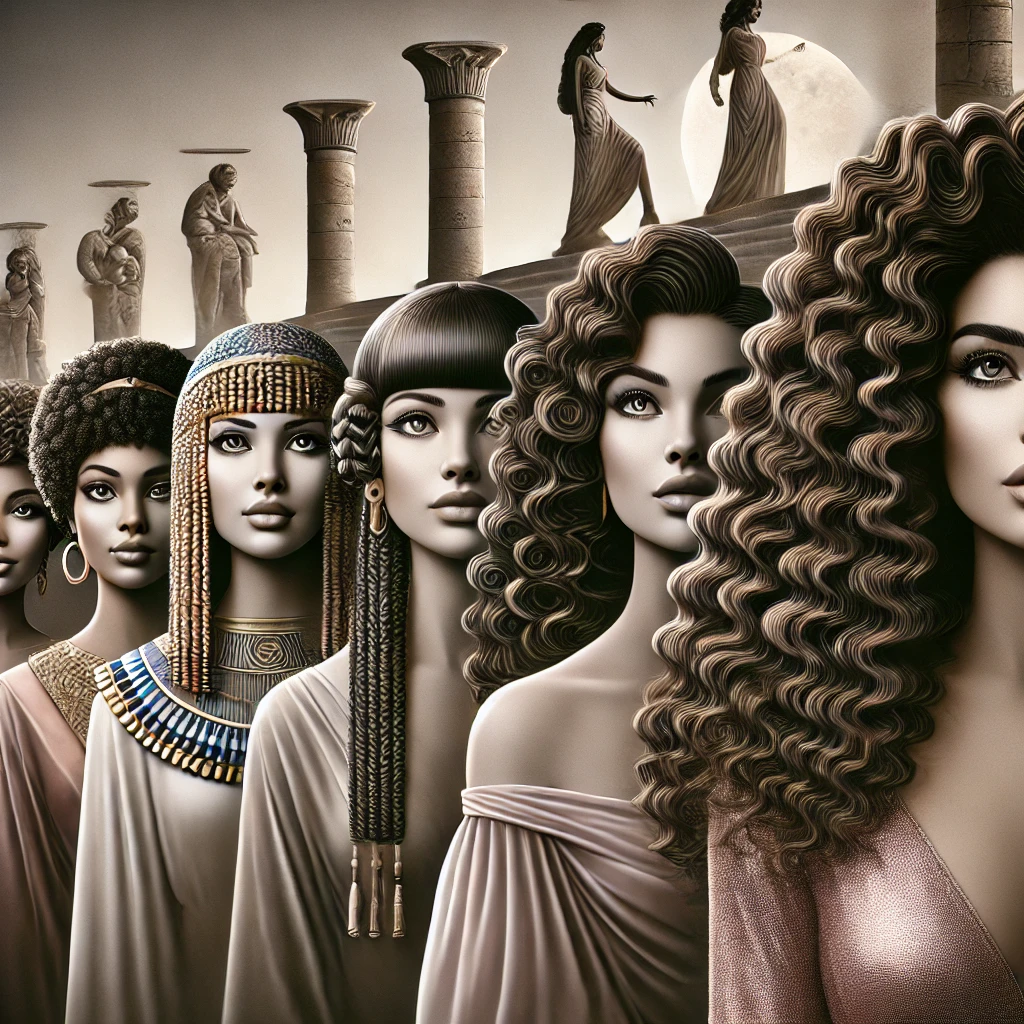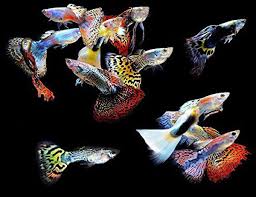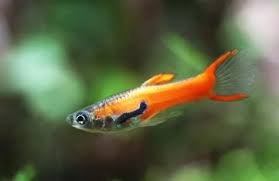The Ancient Roots of Curly Hair in Fashion
The Timeless Allure of Curly Hair
Curly hair has been a symbol of beauty, identity, and cultural significance for centuries. From ancient civilizations to modern runways, the evolution of curly hair in fashion reflects broader societal changes, technological advancements, and shifting beauty standards. This article delves into the rich history of curly hair, exploring its journey from ancient times to the present day. By examining its role in different cultures and eras, we can better understand how curly hair has become a powerful statement of individuality and style in contemporary fashion.
The Significance of Curly Hair in Ancient Civilizations
In ancient Egypt, curly hair was more than just a physical trait; it was a symbol of status and divinity. The Egyptians adorned their hair with intricate braids, curls, and accessories, often using wigs made from human hair or wool to achieve the desired look. Cleopatra, one of the most iconic figures in history, was known for her elaborate hairstyles, which often featured tight curls. These styles were not only fashionable but also served practical purposes, such as protecting the scalp from the harsh sun.
Similarly, in ancient Greece, curly hair was associated with youth, vitality, and beauty. Greek gods and goddesses were often depicted with lush, curly locks, symbolizing their divine nature. The use of olive oil and other natural products to enhance and maintain curls was common, reflecting the importance of hair care in their culture. The Romans, too, embraced curly hair, with both men and women using heated tools to create curls, a practice that can be seen as an early form of modern hair styling.
Curly Hair in African Cultures: A Symbol of Identity and Heritage
In many African cultures, curly hair has long been a symbol of identity and heritage. Traditional hairstyles, such as braids, twists, and afros, were not only expressions of beauty but also conveyed social status, age, and even marital status. The intricate patterns and designs used in these hairstyles often held cultural and spiritual significance, making hair an essential part of one’s identity.
The transatlantic slave trade brought African hair traditions to the Americas, where they continued to evolve. Despite the forced assimilation and attempts to suppress African culture, enslaved people found ways to preserve their heritage through their hair. This resilience laid the foundation for the modern natural hair movement, which celebrates the beauty and versatility of curly and kinky hair.
The Renaissance and the Revival of Curly Hair
The Renaissance period marked a revival of interest in classical art and culture, leading to a renewed appreciation for curly hair. Portraits from this era often depict subjects with voluminous, curly hairstyles, reflecting the influence of ancient Greek and Roman aesthetics. Women used various techniques, such as curling irons heated over open flames, to achieve these looks, demonstrating the lengths to which people would go to follow fashion trends.
During this time, wigs also became popular among the European elite, with curly wigs being particularly fashionable. These wigs were often powdered and styled in elaborate ways, further emphasizing the importance of curls in fashion. The Renaissance period set the stage for the continued evolution of curly hair in fashion, as it became increasingly associated with sophistication and elegance.
The Enduring Legacy of Curly Hair in Ancient Fashion
The history of curly hair in fashion is a testament to its enduring appeal and cultural significance. From ancient Egypt to the Renaissance, curly hair has been a symbol of beauty, status, and identity. As we move forward in this exploration, we will see how these ancient roots have influenced modern trends and continue to shape the way we perceive and style curly hair today.
The Victorian Era to the Roaring Twenties
The Changing Perceptions of Curly Hair
As we move into the 19th and early 20th centuries, the perception of curly hair continued to evolve, influenced by changing societal norms, technological advancements, and the rise of new fashion trends. This period saw the transition from the elaborate hairstyles of the Victorian era to the more liberated and experimental styles of the Roaring Twenties. In this part, we will explore how curly hair became a symbol of rebellion, individuality, and modernity during these transformative decades.
The Victorian Era: Curls as a Symbol of Femininity and Restraint
During the Victorian era, curly hair was often associated with femininity and propriety. Women were expected to maintain a certain level of modesty in their appearance, and hairstyles played a crucial role in this. Curls were seen as a sign of youth and innocence, and women went to great lengths to achieve the perfect ringlets. Hair curlers, made from metal or wood, were commonly used, and women would often sleep with their hair in rags or papers to create curls overnight.
However, the Victorian era was also a time of strict social norms, and women’s hairstyles were often dictated by their social status. Wealthy women could afford more elaborate hairstyles, which required the assistance of maids or professional hairdressers. These styles often included intricate braids, curls, and accessories, such as ribbons and flowers. For working-class women, simpler styles were more practical, but curls remained a desirable feature.
The Edwardian Era: The Rise of the Marcel Wave
The Edwardian era, which followed the Victorian period, saw the introduction of new hair styling techniques, including the Marcel wave. This technique, invented by French hairdresser Marcel Grateau, involved using heated tongs to create soft, undulating waves in the hair. The Marcel wave became incredibly popular, offering a more natural and relaxed alternative to the tight ringlets of the Victorian era.
The Marcel wave was particularly favored by the emerging middle class, who sought to emulate the fashionable styles of the elite. This period also saw the rise of the “Gibson Girl” look, characterized by a full, pompadour-style hairstyle with soft waves and curls. This look, popularized by illustrator Charles Dana Gibson, became a symbol of the modern, independent woman.
The Roaring Twenties: Curly Hair as a Symbol of Liberation
The 1920s marked a dramatic shift in fashion and beauty standards, with women embracing shorter, more practical hairstyles. The bob cut, often accompanied by finger waves or soft curls, became the defining look of the decade. This change was partly driven by the women’s suffrage movement and the increasing independence of women, who were no longer willing to conform to the restrictive norms of the past.
Curly hair, in particular, became a symbol of rebellion and modernity. Women used curling irons and other tools to create the perfect waves and curls, often experimenting with different styles to express their individuality. The popularity of jazz music and the flapper culture further influenced hair trends, with women adopting bold, daring looks that challenged traditional notions of femininity.
The Transformation of Curly Hair in the Early 20th Century
The period from the Victorian era to the Roaring Twenties saw significant changes in the way curly hair was perceived and styled. From the restrained ringlets of the Victorian era to the liberated waves of the 1920s, curly hair became a powerful symbol of changing societal norms and the evolving role of women in society. As we move into the mid-20th century, we will see how these trends continued to evolve, influenced by new cultural movements and technological advancements.
The Mid-20th Century to the 1980s
The Golden Age of Hair Styling
The mid-20th century was a golden age for hair styling, with the rise of new technologies, products, and techniques that allowed for greater creativity and experimentation. This period saw the emergence of iconic hairstyles that continue to influence fashion today. In this part, we will explore how curly hair became a symbol of glamour, rebellion, and self-expression during the mid-20th century, from the Hollywood waves of the 1940s to the big, bold curls of the 1980s.
The 1940s: Hollywood Glamour and Victory Rolls
The 1940s were dominated by the influence of Hollywood, with movie stars setting the trends for hair and fashion. Curly hair was a staple of the era, with women emulating the glamorous waves and curls of stars like Veronica Lake and Rita Hayworth. Victory rolls, a hairstyle characterized by rolled curls at the front of the head, became particularly popular during World War II, symbolizing resilience and patriotism.
The use of hair rollers and pin curls was widespread, allowing women to achieve the perfect Hollywood waves at home. Hairspray and other styling products also became more widely available, making it easier to maintain these elaborate styles. Despite the challenges of wartime, women continued to prioritize their appearance, using hair as a form of self-expression and morale-boosting.
The 1950s: The Rise of the Perm and the Bouffant
The 1950s saw the rise of the permanent wave, or perm, which allowed women to achieve long-lasting curls without the need for daily styling. This innovation revolutionized hair care, making curly hair more accessible to women of all backgrounds. The bouffant, a hairstyle characterized by voluminous, teased curls, became a defining look of the decade, popularized by icons like Audrey Hepburn and Brigitte Bardot.
The 1950s were also a time of conformity, with women expected to adhere to strict beauty standards. However, the rise of rock ‘n’ roll and youth culture began to challenge these norms, with teenagers adopting more rebellious styles. Curly hair, often styled in loose, natural waves, became a symbol of youthful energy and defiance.
The 1960s and 1970s: The Natural Hair Movement and the Afro
The 1960s and 1970s were a time of social and cultural upheaval, with the civil rights movement and the rise of counterculture influencing fashion and beauty trends. The natural hair movement emerged during this period, with African American women embracing their natural curls and rejecting the pressure to conform to Eurocentric beauty standards. The afro, a hairstyle characterized by a large, rounded shape of natural curls, became a powerful symbol of Black pride and identity.
The 1970s also saw the rise of disco culture, with big, voluminous curls becoming a staple of the era. Women used hot rollers, curling irons, and other tools to achieve the perfect disco curls, often accessorizing with headbands, scarves, and other embellishments. This period marked a shift towards more individualistic and expressive hairstyles, reflecting the broader cultural changes of the time.
The 1980s: Big Hair and Bold Curls
The 1980s were all about excess, and this was reflected in the era’s hairstyles. Big, bold curls were a defining feature of 1980s fashion, with women using a variety of tools and products to achieve maximum volume. The perm remained popular, with many women opting for tight, spiral curls that were often teased and sprayed into place.
Television and music played a significant role in shaping 1980s hair trends, with icons like Madonna, Whitney Houston, and Princess Diana setting the standard for curly hairstyles. The decade also saw the rise of hair extensions and weaves, allowing women to experiment with different textures and lengths. The 1980s marked the culmination of the mid-20th century’s obsession with volume and glamour, setting the stage for the more minimalist trends of the 1990s.
The Evolution of Curly Hair in the Mid-20th Century
The mid-20th century was a transformative period for curly hair, with new technologies and cultural movements driving the evolution of hair styling. From the Hollywood waves of the 1940s to the big, bold curls of the 1980s, curly hair became a symbol of glamour, rebellion, and self-expression. As we move into the modern era, we will see how these trends have continued to evolve, influenced by new cultural movements and technological advancements.
The Modern Era and the Future of Curly Hair in Fashion
The Resurgence of Natural Curls
In recent years, there has been a resurgence of interest in natural curls, driven by a growing appreciation for diversity and individuality in fashion. The modern era has seen a shift away from the rigid beauty standards of the past, with more people embracing their natural hair texture and experimenting with different styles. In this final part, we will explore how curly hair has become a symbol of empowerment and self-expression in the 21st century, and what the future holds for curly hair in fashion.
The 1990s and 2000s: The Rise of the Curly Hair Revolution
The 1990s and 2000s were a time of experimentation and diversity in hair styling, with curly hair becoming increasingly popular. The rise of the “curly girl method,” a hair care routine focused on enhancing and maintaining natural curls, marked a significant shift in how people approached curly hair. This method, popularized by hairstylist Lorraine Massey, emphasized the importance of avoiding harsh chemicals and heat styling, allowing curls to thrive in their natural state.
During this period, celebrities like Julia Roberts, Beyoncé, and Sarah Jessica Parker helped to popularize curly hairstyles, making them a mainstream fashion trend. The 2000s also saw the rise of digital media, with platforms like YouTube and Instagram providing a space for people to share hair care tips and styling techniques. This democratization of hair care knowledge allowed more people to embrace their natural curls and experiment with different styles.
The 2010s: The Natural Hair Movement Goes Global
The 2010s marked a turning point for the natural hair movement, with a growing number of people around the world embracing their natural curls. This movement was particularly significant for people of African descent, who had long been pressured to conform to Eurocentric beauty standards. The natural hair movement celebrated the beauty and versatility of curly and kinky hair, challenging the notion that straight hair was the only acceptable standard of beauty.
Social media played a crucial role in the global spread of the natural hair movement, with hashtags like #NaturalHair and #CurlyGirl becoming popular on platforms like Instagram and Twitter. These platforms allowed people to share their hair journeys, connect with others, and find inspiration for new styles. The 2010s also saw the rise of curly hair influencers, who used their platforms to promote self-love and acceptance.
The 2020s: Curly Hair as a Symbol of Empowerment
As we move into the 2020s, curly hair continues to be a powerful symbol of empowerment and self-expression. The fashion industry has become more inclusive, with brands and designers featuring models with a variety of hair textures and styles. This shift reflects a broader cultural movement towards diversity and representation, challenging the traditional beauty standards that have dominated the industry for decades.
The 2020s have also seen the rise of new hair care products and technologies designed specifically for curly hair. From curl-defining creams to diffusers and silk pillowcases, there are now more options than ever for people looking to enhance and maintain their natural curls. This focus on curly hair care has helped to normalize and celebrate curly hair, making it a mainstream fashion trend.
The Future of Curly Hair in Fashion: A Continued Celebration of Diversity
As we look to the future, it is clear that curly hair will continue to play a significant role in fashion. The growing emphasis on diversity and individuality suggests that curly hair will remain a symbol of empowerment and self-expression. Advances in hair care technology and the continued influence of social media will likely drive further innovation in curly hair styling, allowing people to experiment with new looks and techniques.
The future of curly hair in fashion is not just about trends and styles; it is about challenging traditional beauty standards and celebrating the unique beauty of every individual. As we continue to embrace diversity and inclusivity, curly hair will remain a powerful statement of identity and self-expression, reflecting the evolving values of our society.
The Enduring Legacy of Curly Hair in Fashion
The evolution of curly hair in fashion is a testament to its enduring appeal and cultural significance. From ancient civilizations to the modern era, curly hair has been a symbol of beauty, identity, and empowerment. As we move forward, it is clear that curly hair will continue to play a vital role in shaping fashion and beauty standards, reflecting the diverse and ever-changing world we live in. Whether through ancient traditions or modern trends, curly hair remains a powerful expression of individuality and style.










